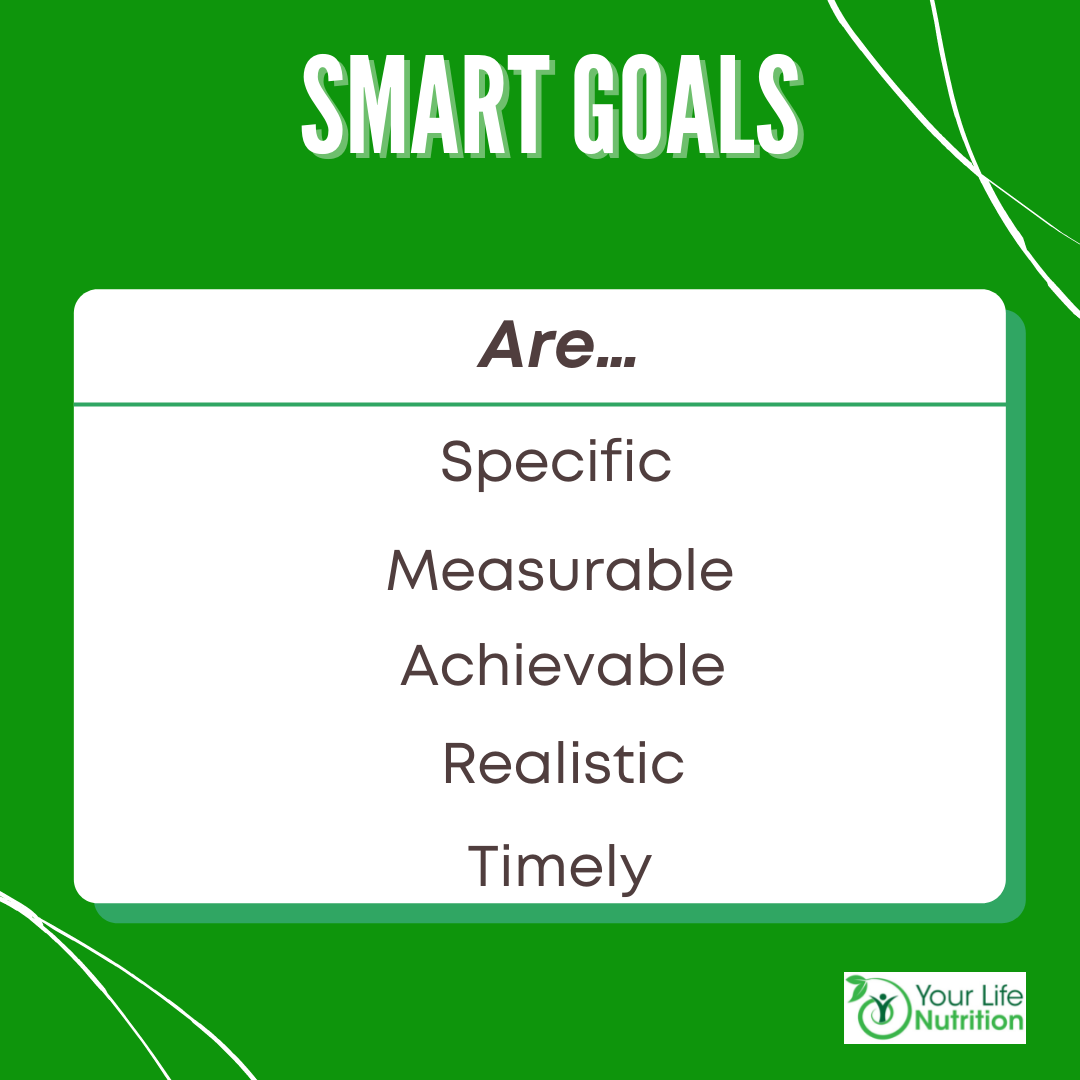Every year heading into the end of December, we hear people start to talk about their goals for the new year. Losing weight, eating better, spending less money are goals that are often set as resolutions. Now that we are into March, how many of those goals are still being achieved? Many people tend to write goals that don’t take into consideration where they are right now in their journey. They tend to write their end goal as their starting point and are disappointed when they do not immediately see progress. These end goals might be realistic in that they are possible to be done, but not realistic for the time span that they set for themselves. This is usually because most people have not been taught how to actually make goals. They have just been told that this is something they should do.
In dietetics and coaching we often use what are called S.M.A.R.T goals. S.M.A.R.T goals take into consideration where you are right now in your journey and can act as stepping stones to get you to your end goal. They typically are one sentence and start with, “I will…”
Being specific gives you a clear vision as to how you’re going to complete your goal. The goal of, “I will lose weight,” is vague and general. There isn’t a clear game plan as to how this person is going to lose weight. It would be more effective if this person said, “I will lose 50lbs by the end of December by eating less added sugars.” This gives a definitive approach to completing this goal.
Making a measurable goal is important because this allows you to visually see your progress. In weight-loss coaching we often ask clients to take progress photos throughout their journeys to measure progress. People can also keep a food diary, or journal to track their progress! Habit trackers are also a great way to measure your goals because you can check off a box every time you make progress. There’s a Habit Tracker PDF in the Goal Getters Group! You can join the group and access it here!

It can be difficult to write a goal that is attainable and achievable when we have our minds so set on the end goal. Going back to our first example, if someone says that they want to lose weight, it might be better to write goals for 5 or 10 pound increments over shorter periods of time. This way, the goal is easier to digest and complete. Being realistic with goals also plays into this. Sometimes our progress is not as linear as we expect it to be. Most of the time there might be points where we plateau. Eating and exercise habits change as life changes. It would be unrealistic to expect them to be able to lose that much weight in a short amount of time. Plus, large weight changes in a small amount of time can have negative effects on the body and mind. It is important to consider all aspects of your health when writing your goals. When you set smaller goals that are realistic and easier to hit, it allows the motivation to continue and can create a feeling of accomplishment.
Finally, being timely with your goals allows you to create a realistic deadline. Setting a goal that is easy but far away can cause procrastination and a loss of motivation. Setting a goal that is difficult but close can cause anxiety and feelings of being overwhelmed. Also, setting goals that are too short can also cause someone to feel discouraged if they aren’t able to complete it. It’s important to set some goals that are challenging, but not too difficult, that can be completed in a realistic amount of time.
Post created by YLN student intern: Samantha Muellauer






Great reminder!
Yes! It is so important to set goals the right way!